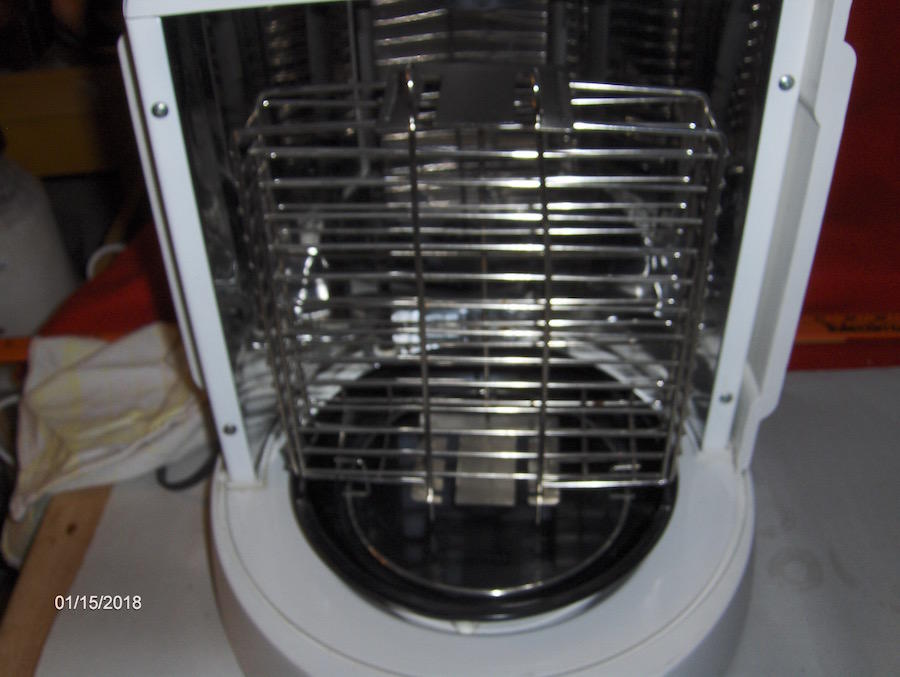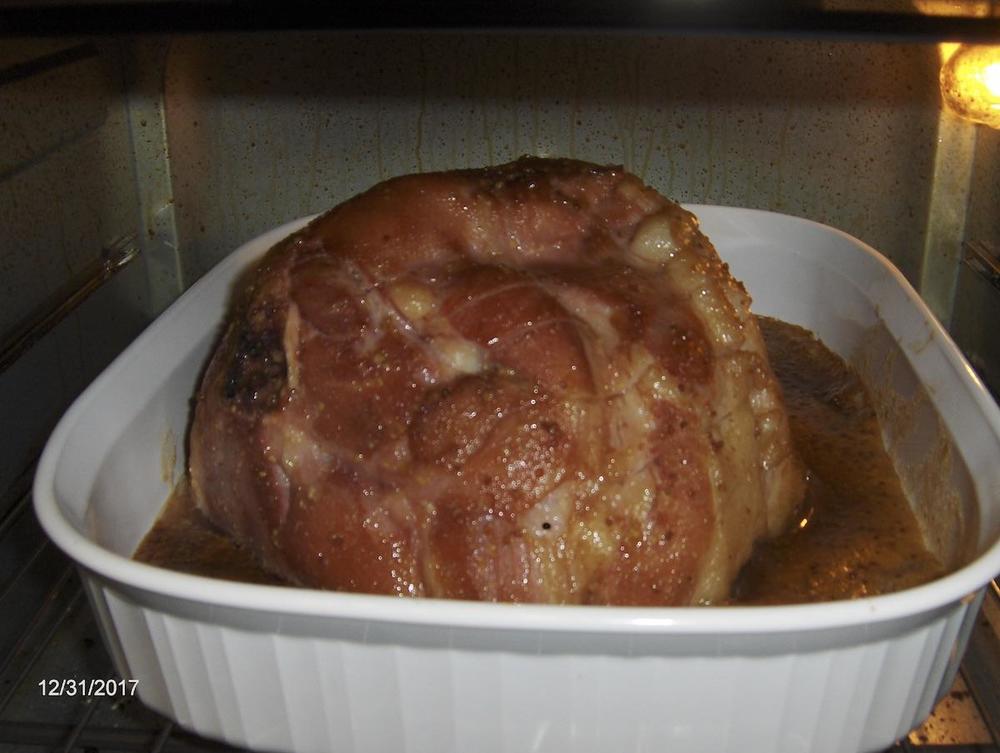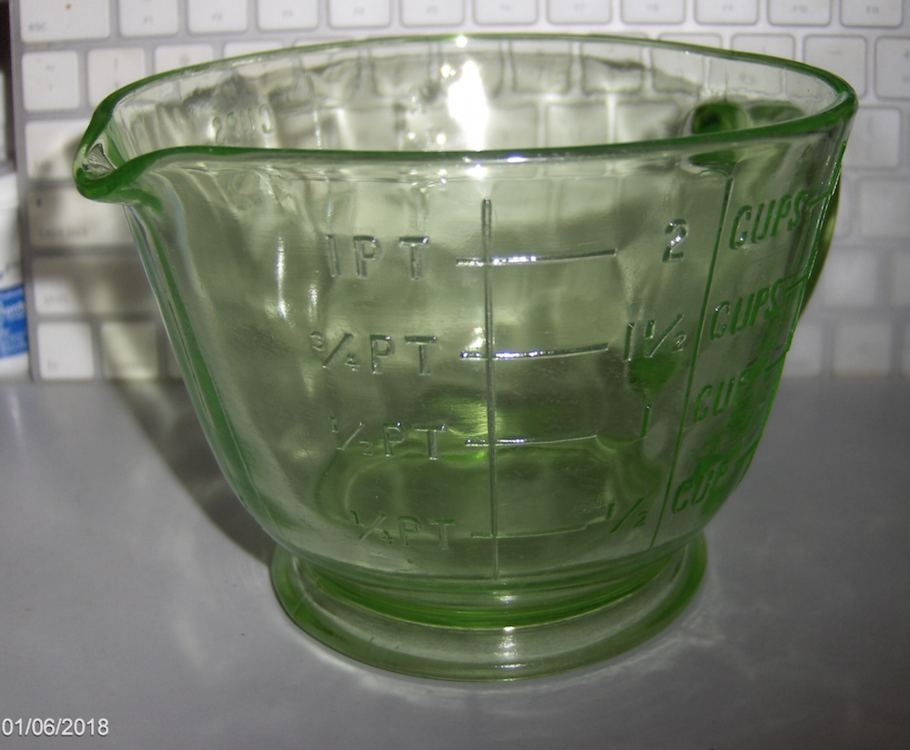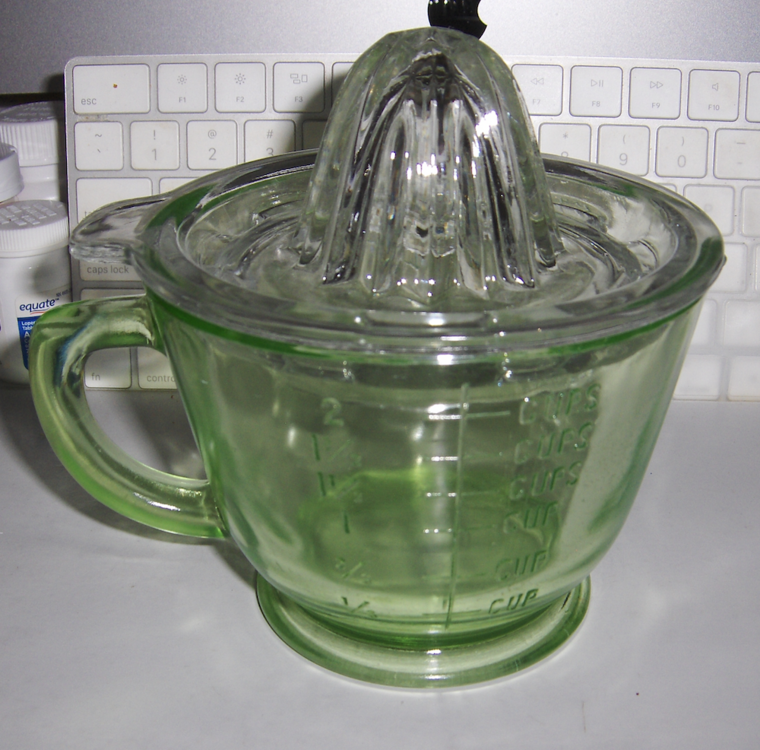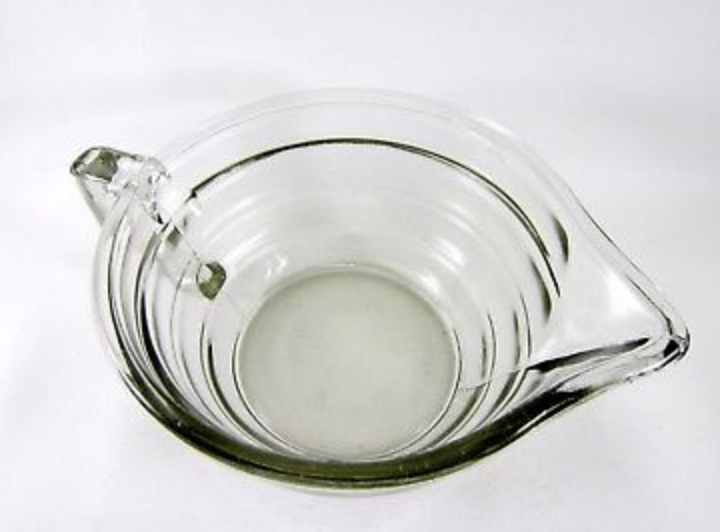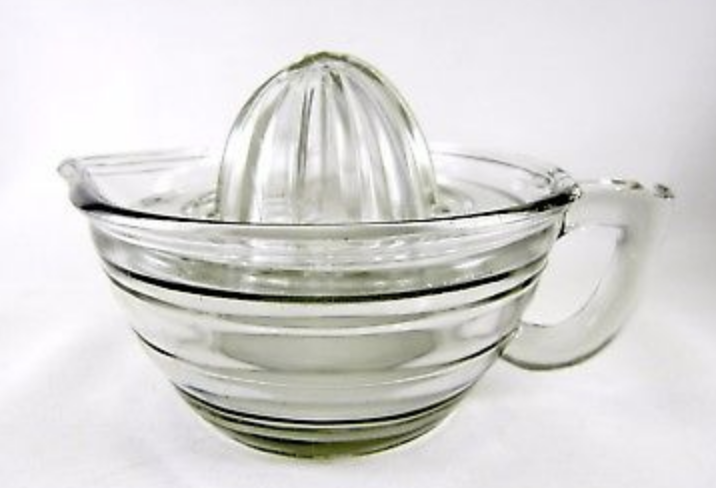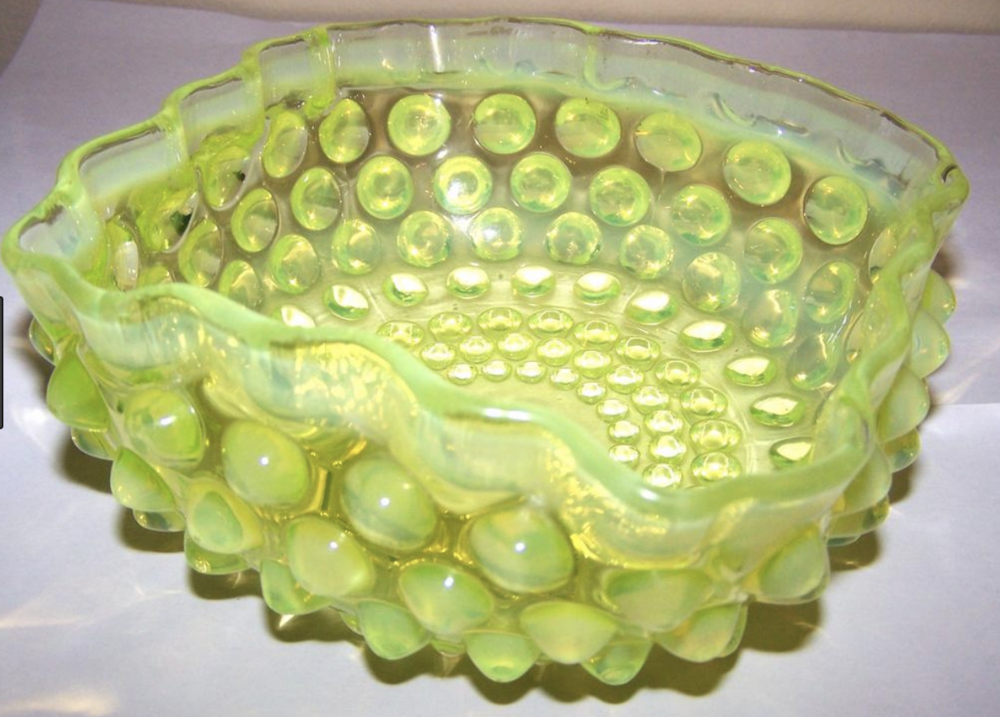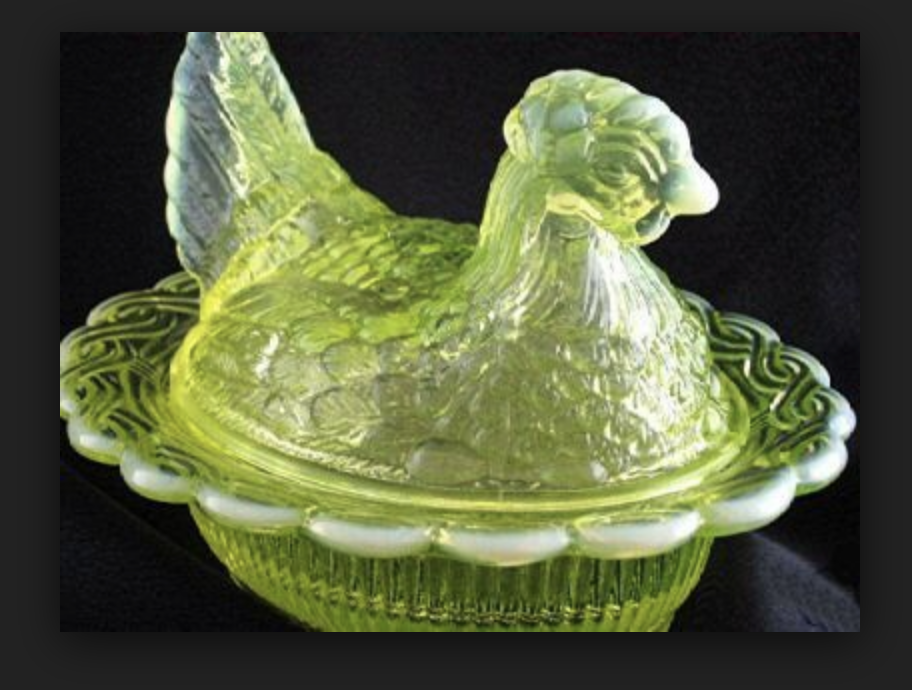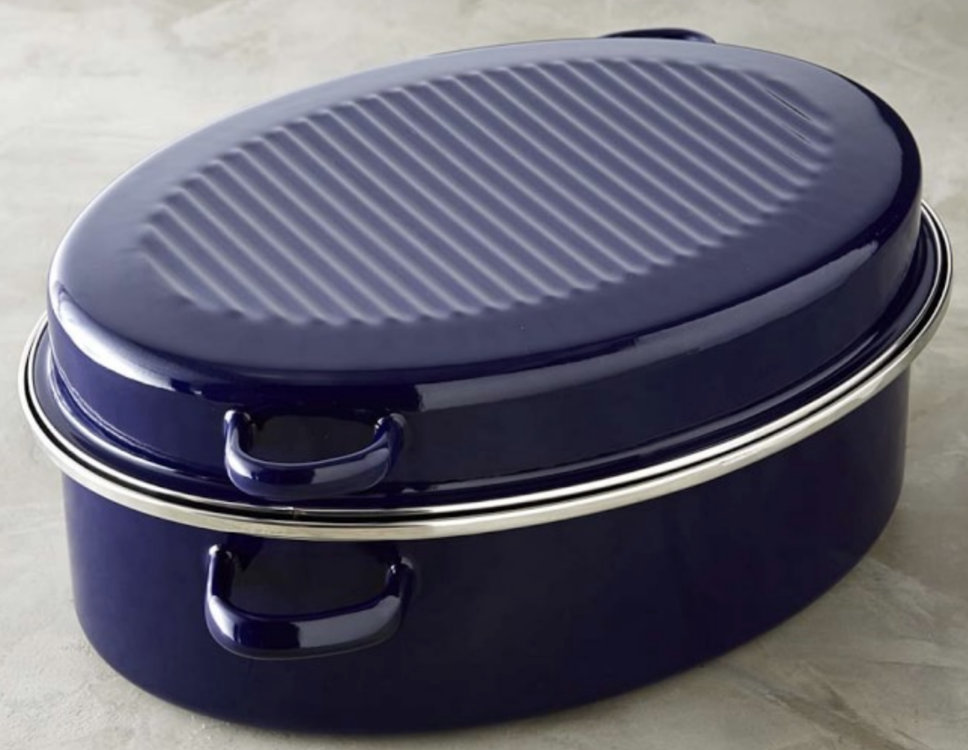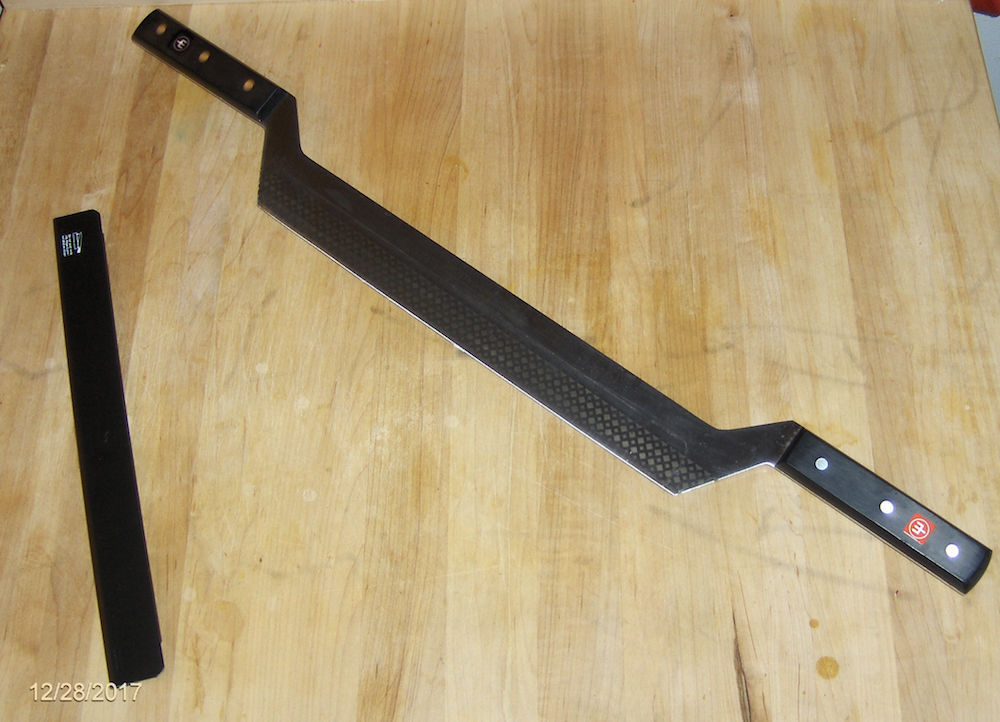-
Posts
11,034 -
Joined
-
Last visited
Content Type
Profiles
Forums
Store
Help Articles
Everything posted by andiesenji
-
I like both. The Mexican "queso tipo manchego" which I buy is made from a combination of Cow milk and Goat milk, has a lovely buttery flavor and MELTS PERFECTLY and does not overwhelm other flavors in cooked dishes. The Spanish manchego has a stronger flavor, a table cheese that goes well with fruits. I don't care for it in cooking. My favorite SPANISH cheese is Idiazabal.
- 1 reply
-
- 3
-

-
This is the large one that I use out on the deck. It is terrific and very versatile, but it "SPITS" and you have to wear a heavy apron, long sleeves and gloves when standing in front of it. I bought it new in 1962 and I have taken very good care of it. Note the address - this was manufactured before the postal zip codes were adopted. And the phrase, "They don't make them like that nowadays" is 100% true. It is heavy, very well made and should last another 45 years! And note how the spit is constructed. There are additional tines at each end, that nailed into a roast, a chicken, turkey or ?? will keep the item secure on the spit. I did roasts, including rib roasts, pork loins on the bone, chickens, turkeys, ducks, geese and leg of lamb and hams.
-
This is the one I have. Regal - about 20 years old, only used a couple of times because I got the Sharp combi convection/microwave oven, which did the same thing only more rapidly.
-
You would need a space for it where SPATTERING GREASE would not be a problem. I also have one of the HUGE horizontal rotisseries that has an open front and I had to use it out on the deck or swathe everything because grease would spit out 3 feet from the thing.
-
I have loads of dish towels. I used to buy Curity diapers which were bundled by the dozen and CHEAP. They could be repeatedly bleached and not fall apart and they were wonderfully absorbent and did not leave lint behind. I still have some that must be 30 years old and still functional. I have "flour sack towels" that Smart & Final used to sell ten for a dollar. I have a dozen or so of the microfiber towels that I got for free to "test" and write a review. I have some terry cloth kitchen towels received as gifts. There are a bunch of coarsely woven 100% cotton towels from the Mexican supermarket that are thick and work nicely as hot pads. There are quite a few "odd" towels that are patterns and solid dark colors, which I used when I was catering to line trays on which there would be containers on which condensation would form. The color did not show the "leakage" and looked nice. I don't think this is a problem. If one likes to have plenty of towels, that is personal preference. You should see how many bath towels and bath sheets I have. I rotated them in and out of "service" a few times a year, laundering ones that haven't been used, just to keep them fresh. There are enough that I could probably provide towels for a baseball team, if needed.
-
I have a vertical electric chicken rotisserie that works quite well. It had kebab skewers but I lost them years ago as I never used them. there are several on ebay.
-

Yard Sale, Thrift Store, Junk Heap Shopping (Part 3)
andiesenji replied to a topic in Kitchen Consumer
Check the "sold" listings. -
For that I have a long cheese wire.
-
weinoo, There are a lot of people who collect anything with mushrooms - and some of the collections are unbelievable. Like the Pyrex fanatics. A few months ago a collector of mushroom ceramics, glass, plastic, kitchen stuff, mostly from the 1960s, posted photos on Facebook of her collection in every room, including an enclosed sun porch, which had been built on to the house just for her collection to expand.
-
I have had absolutely no problems with my older Pyrex in the Oster, but I mostly use Corning ware - white or the Visions amber. The maple/mustard ham I cooked last Monday was a very long, slow roast in my biggest Corning roaster. 14" x 11.5" I baked several loaves of bread in old Pyrex and Fire King loaf pans. I used the "Turbo Convection" setting for these because I have found that it is less likely for the tops to brown too quickly with the boost in air circulation. It's possible that it is the larger interior volume of the Oster that lessens the problems with non-metal ovenware. I've baked numerous pies in Pyrex or in my Emile Henry deep dish bakers. For cakes and quick breads I use the paper molds (not so good for yeast breads because they deform and I wouldn't leave them in the molds anyway.)
-
I see Snickerdoodles and other cookies at supermarkets. In both Walmart and Vallarta markets, that have in-store bakeries, they have the cookies up front where the deli sections are. Same at Vons.
-
Thanks for the offer but it may not fit mine after all. I got it out to take photos and this is one of the clear reamers and it has an outer flange which sits on top of the pitcher. I took some photos. Note the measurement markings. They left nothing to chance. One side is "Cups" measure and on the other side is Pints, Cups and Ounces, just in case. It is a bit greener than appears in the photos, the flash washes it out. Yours is made to sit down into a slightly smaller pitcher that has a ridge below the rim inside for the reamer to rest on. Like this one. There is no marking on this one to indicate the maker, it has been found in clear, green, pink, amber, blue and white milk glass, but they are few and far between but don't carry a high price. While I was pulling out the green one, I decided to bring this little amber one out too. It is a stand alone LEMON reamer, made by Federal Glass. They made them in two sizes and both have the spout on the side. I don't know if you can tell the difference in size from this photo but the amber one is about 2/3 the size of the clear one and it is surprisingly heavy for its size, weighing just under a pound at 15.8 ounces.
-
It's older than the 1950s. Duncan and Miller began producing Sandwich pattern in 1925 and continued into the 1930s when Anchor Hocking and Indiana Glass began producing even wider lines. And much was produced and given as "premiums" in bags of flour well into the 1940s. I remember seeing pieces, mostly in pink coming out of flour bags when I was a child. It was sold at dime stores in the 1950s but production was limited to standard dinner services and tumblers, juice glasses, and Dessert or "Tea" sets, I like this color. I had some of the ruby red, plates, bowls, a footed cake plate, tumblers and a water pitcher. Sold them to a friend who wanted them for a Holiday display in her shop window about 20 years ago. She had a gourmet kitchen shop - has since passed.
-
There is a simple solution used by manufacturers of covered glass casseroles way back in the 1920s. A half inch "lug" on the top handle which made it easy to lift the tops off with a thick pad. I also had an antique copper fish poacher with a similar extension on the lid handles.
-
Or pasteurize them. I have an electric automatic pasteurizer that I originally got for pasteurizing raw milk. Now I use it for the eggs my friend brings me from his flock of "exotic" chickens. That way I don't have to worry about using them raw.
-
Long before the war years. The green glass stuff was late '20s and to the late '30s. The bright red glazes used by Hall China "Chinese Red" in the 20s and most of the 30s contain uranium. It's not dangerous unless you surround yourself with two or three tons of the stuff. True "Vaseline" glass is not clear green. It is a slimy-appearing yellow with a bare hint of green. It is called vaseline glass because of the appearance. A lot of people refer to the clear green as vaseline glass but they are incorrect. Here are a couple of good examples. These are in regular light, under black light they glow bright green.
-
I have the green "measuring pitcher" that the reamer goes to. Broke my reamer about 15 years ago. I have a clear one with it now.
-
Those fish knives were very popular with servers in restaurants where the whole fish was presented at the table and then deboned by the server and transferred to the patron's plate. I had a friend who was a chef at the Huntington Hotel in Pasadena for many years. He had at least a dozen of those knives as well as some gorgeous carving knives. He promised me one but he died unexpectedly of a heart attack and his son let his wife go through the kitchen stuff and she tossed them. When I mentioned the knives, he was so apologetic and said he had no idea his wife did not realize the worth of all those knives and other kitchen things. She was not a cook, thought it was all junk and dumped them without asking him.
-
Frozen food knife. Sold to cut boxes of frozen stuff in half or in sections. I have a couple in my "odd gadgets stuff"
-
I can see the advantage of offset handles if they were ALL offset. I have a roaster with offset handles that just barely fits in my oven. if the handles were at the ends, it would not fit. Several manufacturers have adapted to the new, "compact" ovens and produced various ovenware with handles placed like this so the vessels will fit into smaller oven. Your concept is odd and awkward as shown. I have arthritis in my hands - as do a lot of bakers I know - attempting to grip both sets of handles for people like me, or woman with small hands, would be impossible - and hazardous.
-
I have several pieces of blue Copco and a 1930s Dru casserole, light blue. two or three dark blue speckled roasting pans and a huge dark blue enamel water bath canner. Blue willow china etc.
-
Tinned steel gave way in the latter half of the 1900s to enameled steel, which was the most popular cookware in America from the 1870s and into the 1930s. 1870 was when the COLORFUL, speckled, spattered, marbled, painted with designs, cookware appeared. "Agate" ware and "Graniteware" were the most popular, but the stuff is very collectible today and some unusual pieces can sell for ridiculous prices. Two years ago a red enamel muffin tin with bright blue speckles, sold for $1685.00. Original price in 1889 - 15¢! Some manufacturers hung on for a few years making larger pots which were much less expensive than aluminum or stainless steel and the ubiquitous turkey roaster with it's iconic domed lis and available in many sizes. Dishpans were another item that hung on until pushed aside by plastics.
-
I don't understand the antipathy toward blue. Blue was the "signature" color of Le Creuset produced at the request of Elizabeth David (the color matched that of her favorite cigarette packages) This is a paragraph from an article in the INDEPENDENT: Secret History of Le Creuset "The 1960s saw the launch of Le Creuset's first blue, which was, somewhat bizarrely, inspired by a cigarette packet. Elizabeth David, who brought Mediterranean cooking to the UK and was a huge Le Creuset promoter, was responsible. "She was a heavy smoker and her love of the Gauloise cigarette packet got Le Creuset thinking," says Laura Jones, the company's product manager for cast iron. David must have been chuffed – she went on to stock the biggest range of Le Creuset yet in her specialist London cookware shop and from then on, Le Creuset became synonymous with good food." I have three sizes of the Le Creuset oval ovens in blue.
-
My friend Ben the baker stopped by for a visit on his way back up north after picking up some stuff at Grand Central Market in L.A. I asked him what kinds of knives he uses and he said he has about half a dozen of the Ateco with the 14" blade and four or five of the Dexter/Russell which his assistants prefer because they have smaller hands and the 12" blade is easier for them to use that the longer one. Incidentally, I did list my big Wusthof cheese knife on ebay and have gotten some rather odd questions. I think some of these people are ignorant of how cheeses are made. One asked why such a large blade was needed to cut cheese and why it was so costly. Another wanted to know if it was available with red handles so it would match her set of knives. And one wanted to know if I had listed the length correctly, because "it looks a lot smaller than 25 inches and the blade shorter than 12.5 inches. I told him to look at ALL of the photos. One includes a ruler! Of course it "looks" smaller in the main photo because I had to get farther away to get the entire knife in the picture. I also listed my big pizza knife but no silly questions about it.
-
I nearly brained myself lifting a copper pot down from the ceiling hook. My hands were wet, I had just washed the one that hung next to it and placed it on the dishwasher rack to dry. I had forgotten that this one was much heavier and it slipped and actually turned in my hand so it was the handle that swung around and clipped me over my left ear. It didn't break the skin but an hour later I had a "goose egg" on that side of my skull, which looked really odd. I had iced it but that didn't do much to stop the swelling. Oddly enough it wasn't painful, except with direct pressure. I contemplated going to Urgent Care but really didn't feel like exposing myself to the flu-affected population. The swelling went down after a couple of days though it is still tender.




